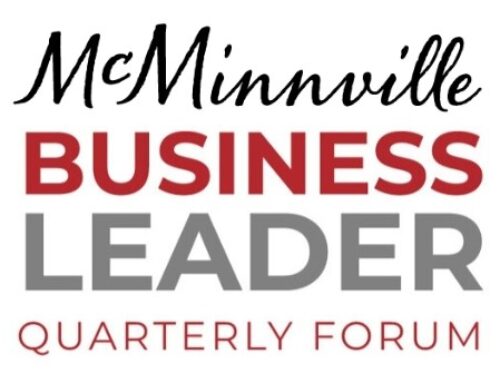Behavior Issue // Not a Homeless Issue
In the 2.5 years I have now lived and worked in McMinnville, Oregon it does feel like the issue is getting worse. Either that or patience has worn thin and the business community is frustrated.
The hard part is discussing this issue of vagrancy and homelessness in such a way that gives equal voices to all parties and outlines the actual conflict that seems to be bubbling up. On NewsRegister.com, in response to the February 11th coverage of a McMinnville City Council meeting, a reader posted this comment which I think identifies the issue pretty clearly:
Trafik (name of the poster) “When various downtown public spaces (both privately- and publicly-owned) are converted to de facto homeless camps with little oversight or regulation as a matter of course, no one should be surprised [at the negative outcomes]. While I sympathize with the difficulties experienced by homeless folks, I’m pretty sure other solutions might benefit both them and the public at large more than allowing these camps willy nilly.
Unfortunately, speaking out in any way which might be construed as anti-homeless these days frequently results in anger and name-calling like “bigot,” “hater” or “Republican.”
We’ve become a classy society.” 08:40 am – Mon, February 15 2016
So instead we must deal with what we can see and what we can address with the full understanding that there is always more to the story.
Staying Above the Water line
In my opinion homelessness is an important topic to discuss and work on. But homelessness is a situation, a result of some misfortune or difficult experience. It is nearly impossible to deal with homelessness on the macro scale because there are many reasons why someone might find themselves in that situation, both controllable and uncontrollable. We can, again in my opinion and understanding, as a society offer as much help and assistance to those who are homeless to help them out of that situation; but the reality is that they must want to change we cannot force them to stop being homeless.

You never quite know how deep and wide the iceberg is when observing it above the water.
People are like icebergs. What is visible of an iceberg above the water is only around 10% – 20% of the actual mass of the floating ice. The real body of the iceberg is submerged, hidden from view, and thus it is un-observable/unknowable. People are very similar in that what we see and experience with each other is only a small portion of the complexity of who we are, most of which cannot be seen or understood by the casual observer. It has to do with our history, our decisions, our emotions, our thoughts…the list is long, complex, and jagged just like an iceberg under the waves. So instead we must deal with what we can see and what we can address with the full understanding that there is always more to the story.
I believe that we must frame the conversation around vagrancy and homelessness on the visible 10% of the iceberg. Instead of identifying the issue as homelessness (a situation not fully understandable) we must deal with what is above the waterline, what we can observe, and that is behavior. Business owners and managers are used to discussing and managing Behaviors. It is what is taught in HR Management, it is how employees are coached, it is how we identify success. As a father I am concerned in teaching proper behavior to my children which translates into manners, acceptable public interactions, and much more. And discussing behaviors removes the uncomfortable reality that if a business owner were to say anything bad about a class of people (such as the homeless or teens) they are at risk of being labeled bigot, uncaring, mean-spirited, etc.
We can reflect on our position as a society that at one time we could trust a common understanding of appropriate and acceptable behavior was taught and respected by the general population. For many reasons that past reality does not seem to be the case anymore. I would contend that to address the issues McMinnville, Oregon is facing currently downtown, and will face in other parts of the town if we just try to force the troubled group of citizens out, is not the situation of homelessness but instead the expectation of behaviors in our public spaces. So instead we must deal with what we can see and what we can address with the full understanding that there is always more to the story.
The city leadership might consider adopting a city wide Expectation of Behaviors. This may be very similar to the behaviors outlined as expectation of employees in an Employee manual. A code of conduct for our citizens and guests that all can be held accountable to and can be referred to when addressing unacceptable behaviors in public. Currently there is a code of conduct in the form of ordinances and rules that are enforced with community policing such as public intoxication, breaking and entering, smoking bans in buildings, etc. But can a community adopt more that we can all hold ourselves accountable to and receive support from officials when enforcement is needed? I believe this is a good place to start.
Respectful and appropriate behavior does not cost anything financially; appropriate behaviors do not discriminate through race, income, sexual orientation, or other individually identifiable characteristics; appropriate behaviors transcend education status; appropriate behaviors uphold and enhance the Golden Rule: Treat others as you would have them treat you.
Is this a perfect answer for every issue? It is not. But I believe it is the right place to start because it takes the target off of the situation (homelessness, vagrancy, loitering) and puts it squarely on the personal and individual accountability of outward behavior. If individuals choose not to align with the adopted code of behaviors, especially after receiving a notice of expected behaviors, then the consequences for their actions are that they are unwelcome in the area, or the town, as a whole. I believe focusing on behaviors would also allow the organizations designed and funded to help the people finding themselves in adverse situations. These organizations can also adopt the behavior expectations and feel that they can then hold their community accountable to the programs and help they give, without accepting or continuing to spend time on the bad actors who just refuse to change.
This all needs to start at the community level of discussion, identifying the common denominators of acceptable behavior, and then working a plan for acceptance and implementation of those values.





